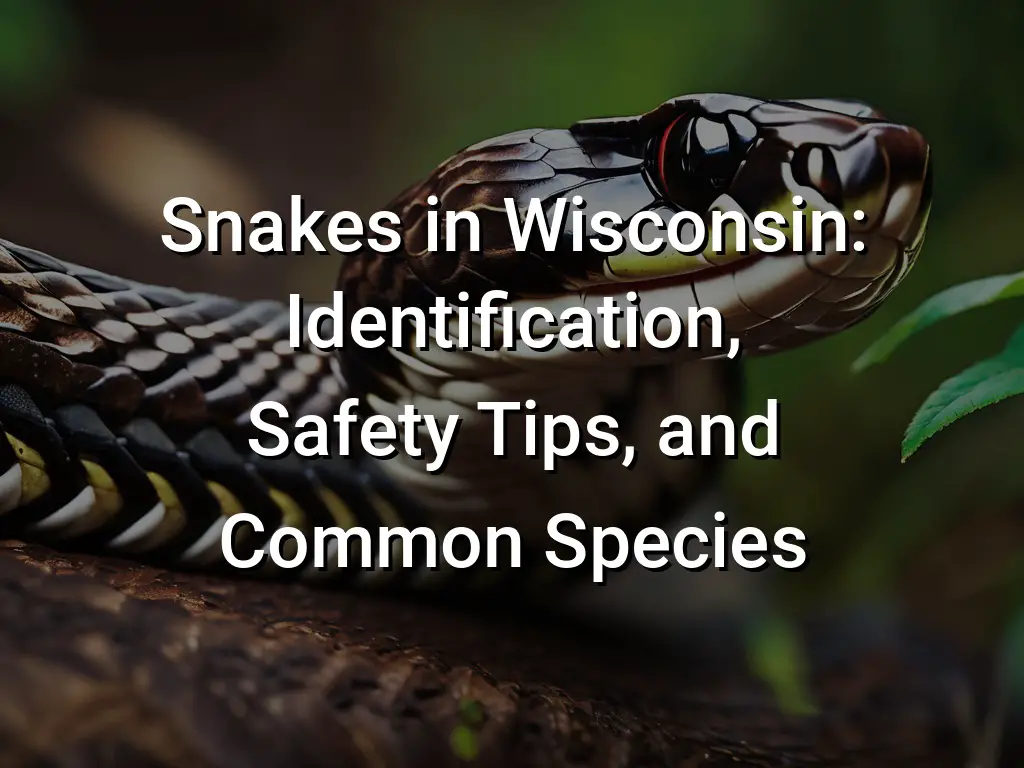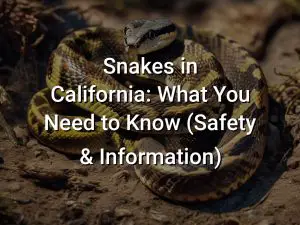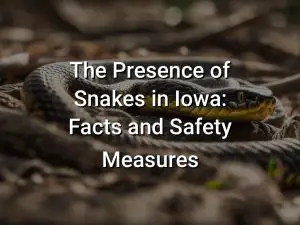Snakes in Wisconsin: Identification, Safety Tips, and Common Species

Wisconsin may not be the first place that comes to mind when thinking of snakes, but the state is actually home to a variety of snake species. Whether you’re a nature enthusiast, a homeowner, or simply curious about these slithery creatures, it’s important to know how to identify them and understand basic safety tips when encountering them.
In this article, we’ll delve into the identification of snakes, providing you with valuable information to help you distinguish between different species. We’ll also share some safety tips to keep in mind when encountering snakes in Wisconsin, as well as highlight some of the common snake species you may come across in the state. Get ready to learn all about snakes in Wisconsin!
Quick Links
Identification of Snakes
Identifying snakes in Wisconsin can be useful for understanding the different species and their characteristics. Here are some key features to help you identify snakes:
- Body Length: Snakes can vary in length, ranging from a few inches to several feet.
- Coloration and Patterns: Snakes in Wisconsin can have different color patterns, including solid colors, stripes, and spots. Some common colors include black, brown, gray, and green.
- Head Shape: Snakes can have different head shapes, such as triangular or rounded. Paying attention to the shape of the head can help in identifying venomous snakes, as many venomous species have a triangular-shaped head.
- Scales: Snakes have scales on their body, and the arrangement of scales can also be helpful in identification.
- Eyes: Snakes can have different eye shapes, with some having round pupils and others having vertical or slit-like pupils.
It is important to note that correctly identifying snakes can sometimes be challenging, and it is always best to err on the side of caution. If you encounter a snake and are unsure of its species or if it is venomous, it is recommended to keep a safe distance and seek the assistance of a professional.
Safety Tips for Dealing with Snakes
Encountering snakes can be a common occurrence when exploring the outdoors in Wisconsin. While most snakes in the state are non-venomous and pose little threat to humans, it’s important to take precautions and follow these safety tips:
- If you encounter a snake, keep a safe distance and observe it from afar. Avoid provoking or handling the snake.
- Do not try to kill or harm the snake. Snakes play a vital role in the ecosystem and help control rodent populations.
- When hiking or walking in snake-prone areas, wear sturdy shoes and long pants to minimize the risk of a snakebite.
- Always stay on designated trails and avoid tall grass and brushy areas where snakes may be hiding.
- Be cautious when lifting rocks, logs, or other objects, as snakes may be hiding underneath.
- If you encounter a snake indoors, open a door or window to provide an escape route for the snake. Do not attempt to handle it.
- If you or someone else is bitten by a snake, seek immediate medical attention. Try to remember the snake’s appearance for identification purposes, but do not waste time or endanger yourself trying to capture or kill the snake.
- It’s always a good idea to familiarize yourself with the venomous snake species that are native to Wisconsin. This knowledge can help you identify and avoid potential threats.
- Lastly, remember that most snakes are harmless and play an important role in the ecosystem. Appreciate their presence from a safe distance and enjoy sharing the outdoors with these remarkable creatures.
Common Snake Species in Wisconsin
Wisconsin is home to a variety of snake species, some of which are venomous and others that are harmless. Here are some of the most common snake species you may encounter in Wisconsin:
- Eastern Massasauga Rattlesnake: This is the only venomous snake species found in Wisconsin. It has a distinctive rattling tail and prefers to live in wetland areas.
- Eastern Garter Snake: This is one of the most common snake species in Wisconsin. It has a long, slender body and usually has three longitudinal stripes running along its back.
- Eastern Milk Snake: This snake species is known for its resemblance to the venomous Eastern Coral Snake. It has a pattern of red and black bands separated by thinner white bands.
- Eastern Fox Snake: This large snake species can reach lengths of up to 5 feet. It has a yellowish-brown color with dark blotches along its back.
- Common Watersnake: This non-venomous snake species is often found near water and has a series of dark blotches along its body. It can be mistaken for a rattlesnake due to its aggressive behavior and tendency to vibrate its tail.
While encountering snakes can be alarming, it’s important to remember that most snakes in Wisconsin are harmless and play an important role in the ecosystem by controlling rodent populations. It’s best to keep a safe distance if you come across a snake and avoid handling it unless you are trained and confident in your identification skills.
Conclusion
Now that you have a better understanding of snakes in Wisconsin, including how to identify them, how to safely interact with them, and some common species you might encounter, you can feel more confident when encountering these reptiles in the wild.
Remember, snakes play an important role in the ecosystem and are generally not a threat to humans if left alone. By taking the proper safety precautions and respecting their habitat, you can coexist peacefully with these fascinating creatures. Enjoy exploring the beautiful wildlife of Wisconsin, and stay safe!






